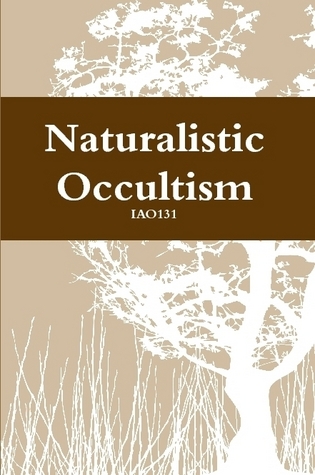
Scientific Illuminism was described by Crowley as “The Method of Science, the Aim of Religion”. A number of attempts to explain magic through science have been made, including (but not limited to) The Science of the Craft by Bill Keith and Real Energy by Isaac and Phaedra Bonewits, both of which (similarly to Peter J. Carroll’s brand of Chaos magic) utilize quantum physics as the “how” of magic. Naturalistic Occultism is much more psychology-heavy, explaining everything from astral projection to divination using almost exclusively various psychological models and schools of thought.
Certain accusations (by others, such as some scientists) that psychology is a “soft” discipline aside, the author does a pretty good job of basic, bare-bones explanations. He certainly achieved his overall goal of explaining occult concepts and techniques without resorting to mysticism and superstition. For example, he shows how the astral body is actually the brain’s own perception and understanding of the shape and appearance of the physical body itself–the image that the brain carries of the body, as it were. This doesn’t stop him from including a brief appendix with instructions on how to astrally project using this concept.
And I suppose that’s one of my complaints with this book–it’s brief. One of my partners, who is similarly enamored of a more scientific way of explaining esoterica, remarked on what he read as seeming like an abstract rather than a full text, and I would agree with him. There are some very good ideas started in this book, and yet the author could have gone so much further. I would have liked to have seen more thorough explanations of how psychology explains the various occult concepts he covers, as well as a greater variety in the concepts explored. I also would have enjoyed more practical applications of the psychological model of magic that is espoused in this book, because I did like the couple of appendices with that sort of thing in them. I wasn’t quite so thrilled by the occasional tendency toward “debunking” that came across in the writing; one can explain the science of mystical practices and still have a constructive view towards those practices, an example being The Spirit of Shamanism by Roger Walsh. (Just as a note, there were some more constructive aspects to the material as well; it didn’t all come across as debunking.)
In short, there needs to be more, because this is a good start. Overall, I liked the book, and I’m only docking it points for its brevity. If you want a very concise look at the psychological model of magic, this is a good text to have on hand. And there most certainly need to be more rational approaches to a series of topics that often fall prey to ridiculousness and need some serious paring with Occam’s Razor. More writing from IAO131 along this vein would be one such welcome thing, to be sure.
~review by Lupa
The Society of Scientific Illuminism, 2009
pp. 96, $9.95
